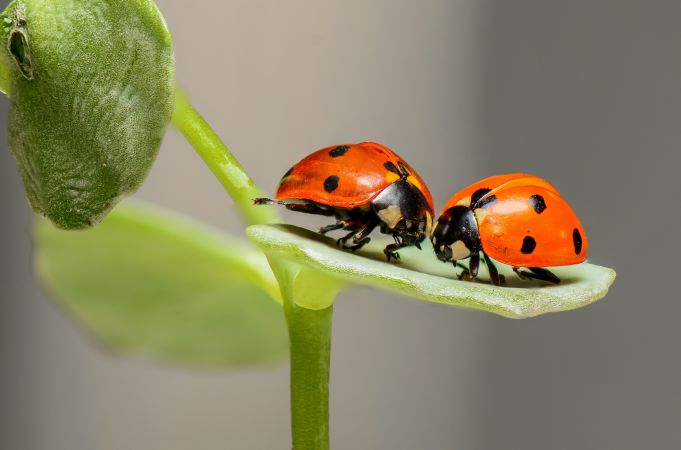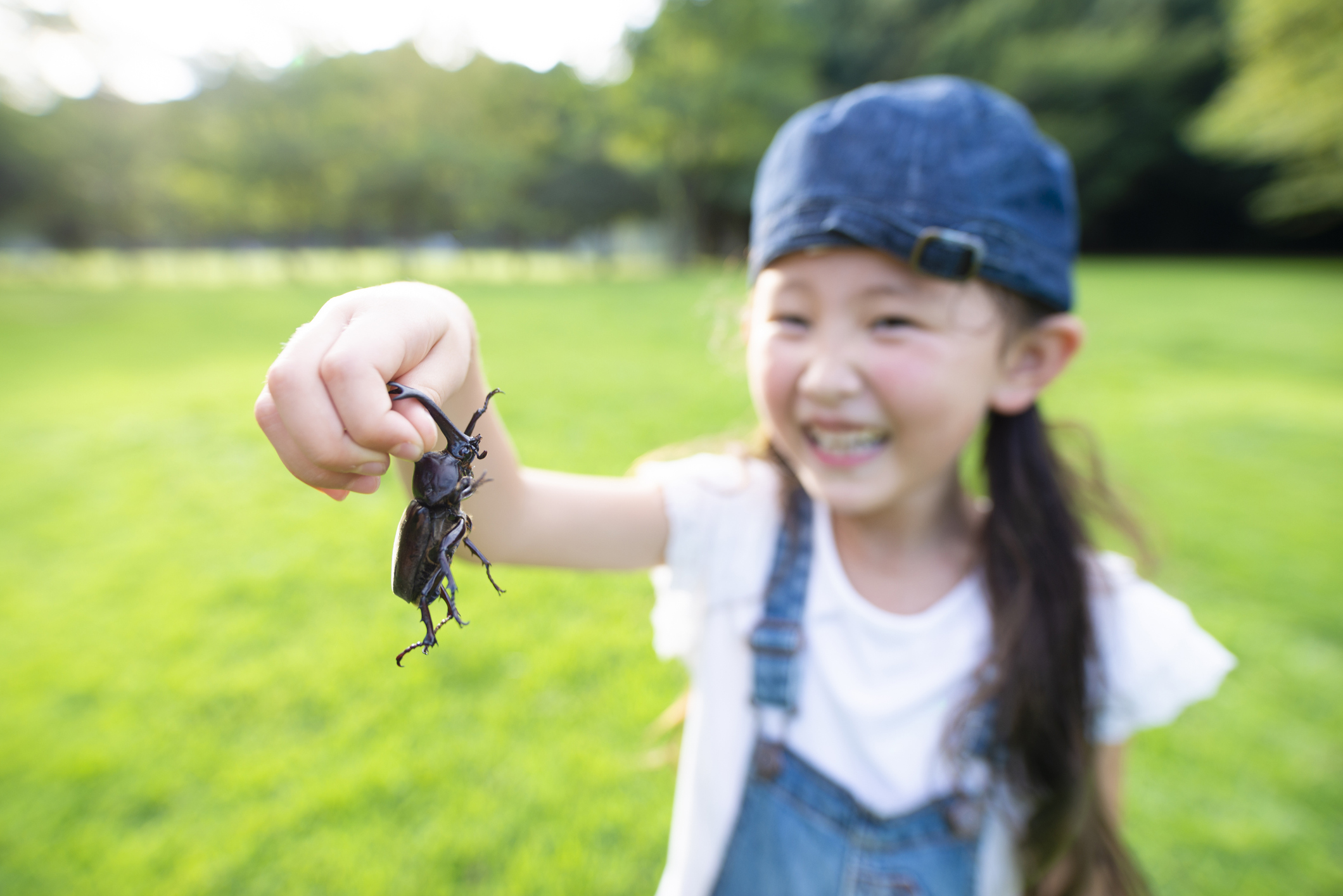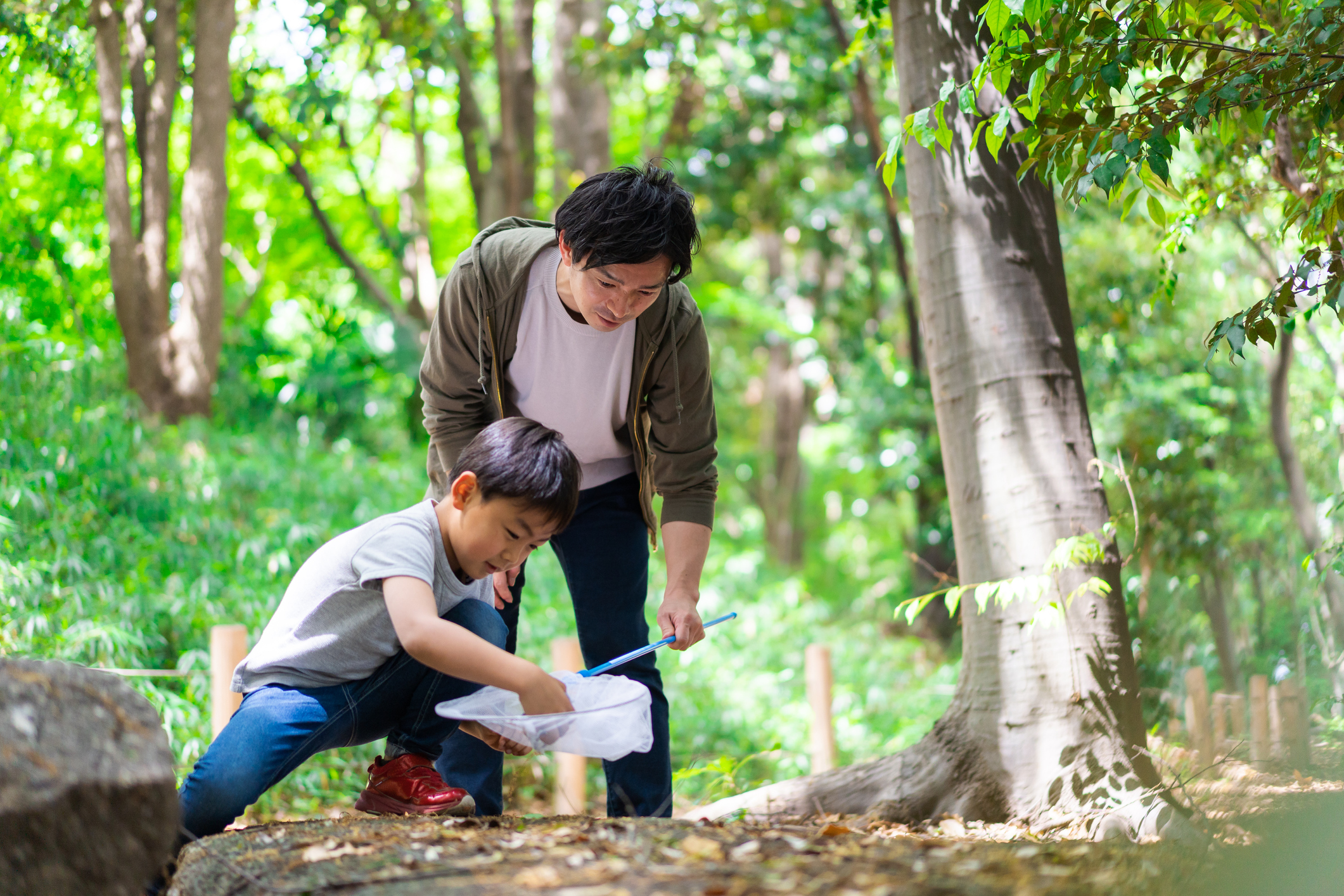
July 14, 2023
Bug Catching in Japan
A beginner’s guide to bug catching culture in Japan
By Monica Hand

A child racing through the park gleefully squealing, arms stretched out, hands cupped around some many-legged being. It’s a summer scene not uncommon anywhere in the world as curious kids and cool bugs tend to go hand in hand. In Japan though, the bug-catching phenomena runs much deeper in its cultural history. It inspired the internationally beloved series of “Pokémon,” after all.
Clearly, in Japan, bugs seep into life and culture; the nostalgic sounds of cicadas, the terrifying sightings of mukade, the surprising crunch of grasshopper dishes. With the number of insect species estimated to be over 100,000 throughout the country, it should come as no surprise how influential these little crawlers have been. Even in art and literature, Japan has always drawn parallels with the summer months to the sounds and sights of insects big and small.
And for many, these summer sounds and sights also come with the promise of a challenging adventure.
Why catch bugs
For children, it is a no-brainer why they love the thrill of chasing bugs in parks or on vacation. But for parents, introducing children to bug catching is a win-win.
Teaching where to find specific bugs, how to catch them and how to care for them is all a sneaky science lesson. Applying what they learn in real life makes it more impactful, helping to make biology studies more accessible. For this exact reason, many Japanese elementary schools include a project around bug catching and care for these exact reasons.
Not only does it get children involved in science from a young age, but it also promotes individual health. For example, there is the physical demand of the actual chasing down of floating fireflies or scurrying praying mantises. Then the motor skills needed to swing a net on a target that is moving in unknown directions. While it may seem small, it goes a long way, especially in the age of gaming and online learning.
After childhood, there are all kinds of benefits too, besides making the buggy months more bearable. In fact, bugs as a career path has a long history in Japan, with merchants in the Edo period selling crickets to city folks who missed the country sounds. Now, more successful catchers and breeders can make an impressive amount of money in the bug season, with some rare beetles going for over ¥10,000.

How to get started
Gear
While most stores in Japan offer the latest tools in the ever-evolving bug prevention and elimination techniques, the tools for catching and raising are just as easy to find. As soon as any winter chill melts away, every coin shop and hobby store sets out a fresh seasonal aisle full of gear for all bug-related hobbies.
For starting out, it is best to have a net and a portable cage. Of course, catching methods will vary by bug, but the net and portable cage are both flexible in their catching capabilities making them great for everything from the high-flying dragonflies to the hopping crickets and speedy beetles. Optional gear additions include some gloves, plastic baggies for bait and a clear enclosure if hoping to keep bounties longer than just a few hours. All of this is available at a ¥100 shop or hobby store.
For some of the shyer bugs, like stag beetles, or kuwagata, setting up bait is a good idea. Beetle baits are often available at the same stores as the gear, but there are also homemade options. A common form of beetle bait for beginner bug catchers is a mature banana. While this kind of bait is best for beetles, it may also attract a few other interesting critters. For adult bug catchers, mixing the banana with a cheap sake will ripen the smell.
After placing the banana or concoction in a bag, set it up in a tree or low bush. Be sure to check back every few hours, enough time for a new friend to find it, but not so often that any potential buggy visitors get spooked away. Keep in mind, this is only recommended if the tree or bush is out of the way, rural, or on your own property.
Location
While the bugs of Japan are often found just about anywhere, there are some bugs that will have to be sought out in parks, riversides, or on vacations out of the city. Keep in mind that national parks and gardens prohibit taking or removing any kind of wild or plant life which means bug hunting there should be kept to observation rather than actively capturing.
As for exactly where to catch the bugs, it will also depend on what type is the target. A general rule is that wet areas like lakes and ponds will give the best chance for catching flying bugs like dragonflies, but mature, damp and woody areas or gardens will be best for all that crawl. Of course, the bug-specific location research is all part of the fun.
But as sightings of popular bugs like rhinoceros beetles, or kabutomushi are rare, many pet stores now offer them for purchase from larvae to fully developed stages. Raising a beetle could be an easy initiation into the bug culture of Japan!







